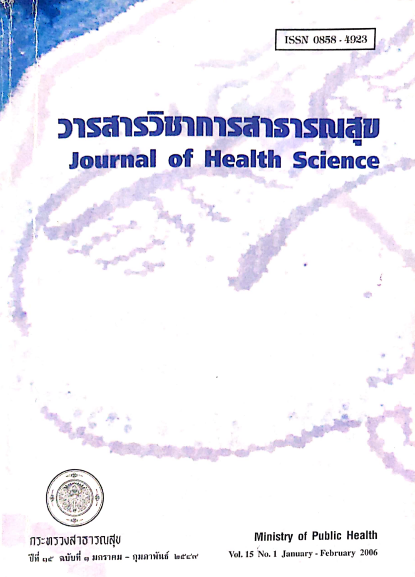Research Series of Thai Health Care Financing: Part 4 Traffic Accident Victim Protection Act B.E. 2535 in the Context of Universal Coverage: Reform Options
Keywords:
National Health Security Act, Traffic Accident Victim Protection Act, Healthcare financing sources, traffic accident victimAbstract
Traffic Accident Victim Protection Act was implemented since 2535 B.E., Though it is a mandatory scheme, instead of the public sector, the for-profit private insurance companies were the carriers of the scheme. The scheme compensates medical treatment based on fee for services and maximum liability, a lump sum death and disability compensation are also granted. Financial report in 2545B.E. indicated a net premium of 7,003 million baht received, with a very high administrative cost (41%) and 52 percent loss ratio. The scheme can not cover all liabilities for traffic accident victims, affected by both insured and uninsured cars. A major reform may be required in the context of Universal Health Care Coverage in Thailand in 2545 B.E. The objectives of this study were to estimate total financial resource requirement (for medical care, death and disability compensations) for all traffic accident victims, to estimate how much would the government introduce additional gasoline tax to cover all traffic accident victims, and offer policy alternatives for reform.
Based on secondary data, it was estimated that total resource requirement for all traffic accident victims would be 7,158 million baht in 2545 B.E., of which 63 percent for inpatient care, 16 percent for pre-hospital care, 15 percent for death compensation, 5 percent for ambulatory 1 percent for disability.
Based on household consumption of gasoline from the 2545 Household Socio-economic Sur vey conducted by the National Statistical Office, the government had to raise additional 0.32 baht to a litre of gasoline in order to generate 7,158 million baht to cover the financial requirement for its obligations to all traffic accident victims. However, regressivity was observed, where it put higher burden on the poorest than the richest households.
Two goals of reform were proposed: to cover for all traffic accident victims, affected by the insured and uninsured cars, and an appropriate scheme administrative cost.
Three reform options were proposed based on sources of finance. Option one was to generate revenue from premium contributions by car owners. Option two was to increase general tax and option three was to earmark gasoline tax. Further analysis indicated that option two and three were neither politically feasible nor socially acceptable.
Three reform alternatives under option one were further identified: conservative, minor and major reforms. A major reform however, was recommended in order to serve dual purposes of full coverage and minimum administrative costs. This was to outsource premium collection to the Department of Land Transport premium of which the mandatory annual renewal of car licenses offered an ample chance for such an additional burden. The large part of premium would be transferred to the National Health Security Office (NHSO) to cover all victims for medical care, death and compensations for invalids. The second preferred choice was a minor reform, by sub-contracting private insurance companies to collect premium, the large part of the premium would be transferred to the NHSO.
Downloads
Downloads
Published
How to Cite
Issue
Section
License
Copyright (c) 2019 Journal of Health Science

This work is licensed under a Creative Commons Attribution-NonCommercial-NoDerivatives 4.0 International License.







